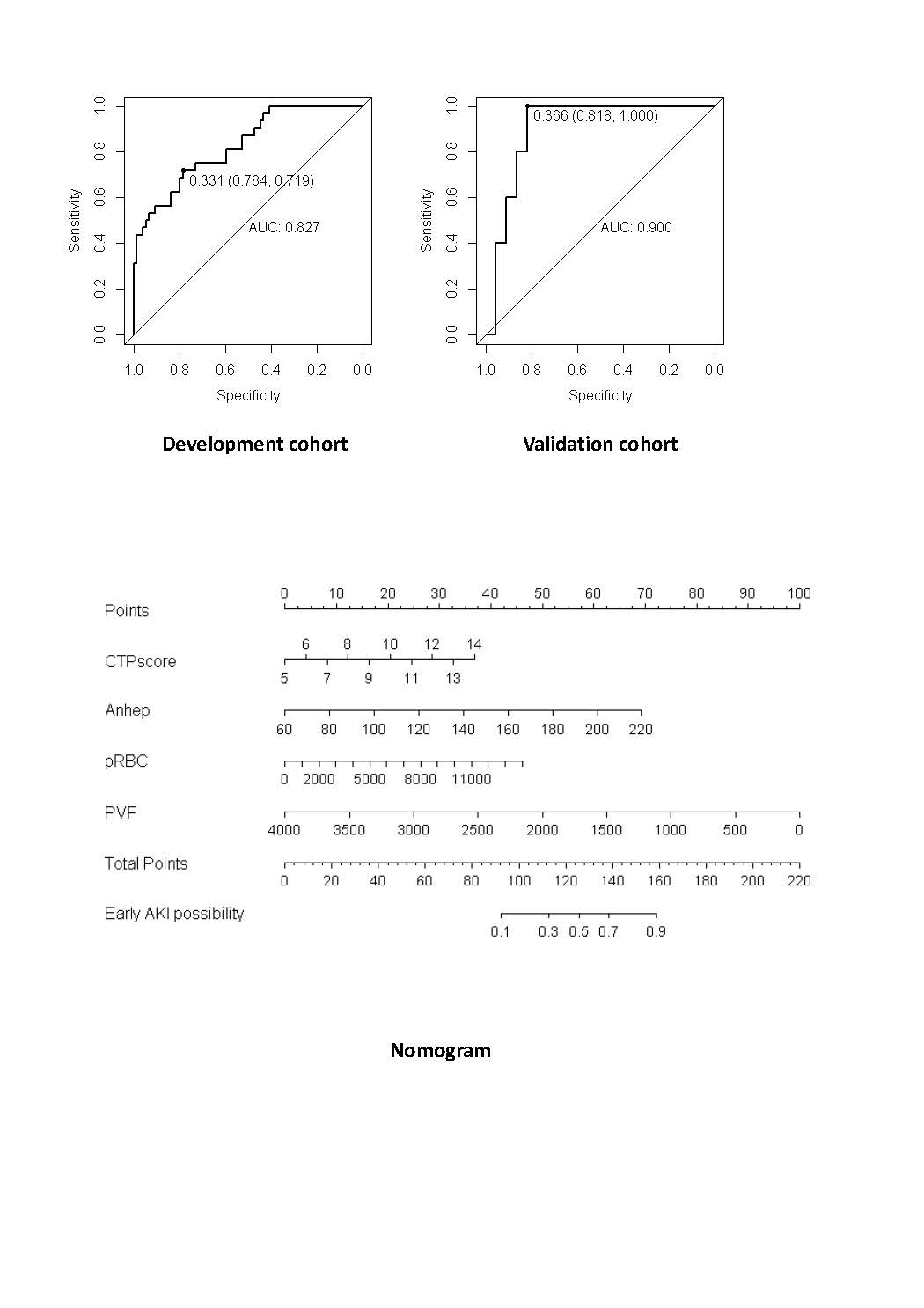Intraoperative Portal Vein Flow Can Predict Early Acute Kidney Injury Following Allogeneic Liver Transplantation: A Retrospective Observational Study
1Hepatobiliary Surgery Department and Unit of Organ Transplantation, The First Hospital of China Medical University, Shenyang, China, 2Department of Hepato-Biliary-Pancreatic Surgery, Cancer Hospital of China Medical University, Liaoning Cancer Hospital & Institute, Shenyang, China
Meeting: 2019 American Transplant Congress
Abstract number: A284
Keywords: Kidney, Liver transplantation
Session Information
Session Name: Poster Session A: Liver - Kidney Issues in Liver Transplantation
Session Type: Poster Session
Date: Saturday, June 1, 2019
Session Time: 5:30pm-7:30pm
 Presentation Time: 5:30pm-7:30pm
Presentation Time: 5:30pm-7:30pm
Location: Hall C & D
*Purpose: Acute kidney injury (AKI) is a major and severe complication following allogeneic orthotopic liver transplantation (OLT) and is associated with increased postoperative morbidity and mortality. With the proposal of RIFLE (Risk, Injury, Failure, Loss, End-stage kidney disease) and AKIN (Acute Kidney Injury Network) standards, the diagnosis of AKI has been significantly improved. However, the risk factors and the prognosis factors of AKI remain uncertain, the relativity of intraoperative portal vein (PVF) flow and acute renal injury following liver transplantation hasn’t been discussed yet. The purpose of this study was to investigate the correlation between PVF and AKI and to construct a prediction model of early AKI following OLT with the combination of PVF and clinical parameters.
*Methods: Clinical data of 133 patients who underwent allogeneic liver transplantation at first hospital of China Medical University from April 2005 to March 2017 were analyzed. Data of 106 patients (first ten years patients) were used to develop the prediction model. Then we assessed the clinical usefulness of the prediction models in the validation cohort (27 patients). Early AKI according to AKIN criteria based on absolute serum creatinine increase during 7-day of postoperative follow-up. A Urine output criterion was not used.
*Results: After stepwise regression, the prediction model consisted of the Child-Turcotte-Pugh score (p=0.029), anhepatic phase (p=0.011), red blood cell infusion (p=0.021), and PVF (p=0.001). In the development cohort, the c-statistics were 0.827 [95% CI, 0.743-0.911] in this prediction model. In the validation cohort, sensitivity was 100% and specificity was 81.8% on the cut-off value.
*Conclusions: In this study, we demonstrated the utility of PVF as a predictor for early AKI following allogeneic liver transplantation the clinical usefulness of the prediction model, through the combination of the Child-Turcotte-Pugh score, anhepatic phase, red blood cell infusion, and PVF.
To cite this abstract in AMA style:
Zhang J, Jiao A, Liu Q, Zhang C, Sun N, Li X. Intraoperative Portal Vein Flow Can Predict Early Acute Kidney Injury Following Allogeneic Liver Transplantation: A Retrospective Observational Study [abstract]. Am J Transplant. 2019; 19 (suppl 3). https://atcmeetingabstracts.com/abstract/intraoperative-portal-vein-flow-can-predict-early-acute-kidney-injury-following-allogeneic-liver-transplantation-a-retrospective-observational-study/. Accessed December 17, 2025.« Back to 2019 American Transplant Congress

